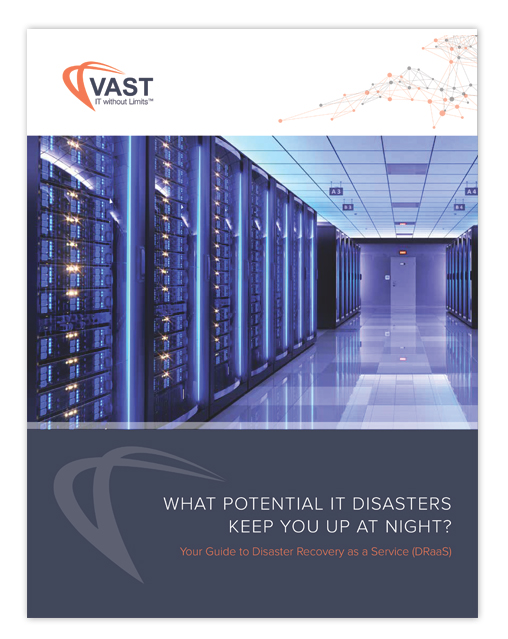Modern organizations are faced with constantly evolving business conditions and requirements. Companies must demonstrate agility and scalability to take advantage of emerging opportunities and adapt to changing customer expectations. Businesses must also build resilience in their IT environments to protect them from threat actors, accidents, and disasters.
Management must balance maintaining a viable IT environment with the realities of limited financial and technical resources. Companies are finding advantages in adopting a multi-cloud strategy to address their current and future IT requirements. A multi-cloud approach leverages multiple public cloud service provider (CSP) offerings rather than committing to a single vendor.
Following are some of the benefits available to organizations with a multi-cloud strategy.
Managing Cloud Costs
The primary public CSPs all offer their customers large portfolios of solutions and services. Customers can obtain specific resources like storage, compute capacity, networking bandwidth, and machine learning services from multiple vendors. The cost of similar services may vary widely between vendors. Companies can maximize their IT budgets by going with a multi-cloud strategy.
Companies with a multi-cloud mindset can engage in comparison shopping to take advantage of competitive and alternate pricing plans. Businesses can find plans that address their requirements while optimizing costs. Organizations with a multi-cloud infrastructure should revisit resource provisioning regularly and be prepared to migrate to a new provider when better terms are available.
Avoiding Vendor Lock-In
Vendor lock-in occurs when a company becomes overly dependent on a provider for a service or solution and finds it difficult or expensive to migrate to a new provider. Companies suffering from vendor lock-in can be subject to excessive price increases that may be impossible to avoid. Random price increases can wreak havoc with a company’s IT budget.
Many organizations previously opted for a cloud strategy based on the offerings of a single provider, promoting potential vendor lock-in. A multi-cloud strategy is designed to avoid vendor lock-in. Companies should investigate the portfolios of multiple CSPs and spread workloads over several providers. Teams should utilize open source solutions that are easily migrated to alternate platforms to support a multi-cloud approach.
Accessing Cutting-Edge Technology
Cloud providers continuously develop new services and refine offerings to attract new customers and address current client demands. For example, all major providers have focused on machine learning platforms and AI applications to meet market expectations. Some vendors have concentrated on building platforms to support advanced analytics.
Sometimes, a specific vendor’s underlying technology may provide a vastly superior solution for a business objective. A company engaged in training machine learning models might find a particular CSP’s solutions align with their goals better than the competition. They can gain a competitive advantage by retaining the ability to choose the optimal technological platform for their systems and applications.
Organizations with a multi-cloud infrastructure can ensure they are taking advantage of the best technology available in the cloud. Companies can choose to migrate innovative applications as providers introduce new technological solutions. Businesses can avoid falling behind the competition by being unable to access cutting-edge technology.
Enhanced Reliability and Resilience
A company can enhance its internal and external reliability and resilience with a multi-cloud strategy. A single cloud infrastructure can present risks such as service interruptions or operational limitations. Organizations can minimize these risks by utilizing multiple providers for cloud services.
Companies can improve resilience by replicating mission-critical systems or data resources across multiple cloud providers. The replicated resources ensure continued availability even if a provider experiences an outage.
Improved Performance
Companies can improve performance with a multi-cloud infrastructure. Organizations can strategically distribute workloads with multiple cloud providers to reduce latency and enhance application performance. A business can choose cloud providers near end users to minimize network latency and boost system performance.
Companies with an edge computing environment may need to locate local cloud providers to streamline data transmission. A multi-cloud mindset makes these decisions a standard element of cloud management and can be essential in meeting business objectives.
Stronger Security Posture
Cloud IT infrastructures require strong security to protect customer systems and data. The ubiquitous nature of cloud access heightens the need for security. Organizations can use their cloud providers’ targeted security solutions to safeguard specific infrastructure components. For instance, a provider may offer stronger security or regulatory compliance features for particular workloads. Customers can select providers employing cutting-edge security solutions to protect their valuable data resources.
Technical Skills and Resource Availability
Many cloud customers rely on their provider’s technical skills to support business operations. The technical demands placed on the customer vary based on the chosen delivery model. SaaS solutions require very little technical expertise, as the provider is responsible for everything except the customer data. The PaaS and IaaS models put more responsibility on the customer’s technical staff.
Companies can select providers whose technical skills complement their staff’s expertise with a multi-cloud strategy. Different CSPs will likely have varied technical skills that companies can leverage to fill customer knowledge gaps. An organization can ensure the availability of necessary skills by engaging multiple cloud providers.
VAST Supports Your Multi-Cloud Infrastructure
VAST has forged strategic partnerships with all the major cloud vendors, and our teams are well-versed in their products and services. Our cloud experts can help your company find the right mix of providers to address your business objectives. We offer services and solutions designed to optimize your organization’s multi-cloud environment.
- VAST’s data center transformation services can help your company develop a multi-cloud solution to modernize a legacy on-premises infrastructure and help your business grow.
- Our teams have extensive experience migrating customers to the cloud and can streamline the process for your company. We will assess your current workloads and help develop a viable migration plan that aligns with your business requirements and budgetary constraints.
- VAST View offers companies with a multi-cloud environment a unified platform to manage and optimize their resources. It’s a comprehensive tool that addresses all phases of cloud migration and management to help you maximize the value of your IT budget.
Contact us today and start enjoying the benefits of a multi-cloud IT environment.



